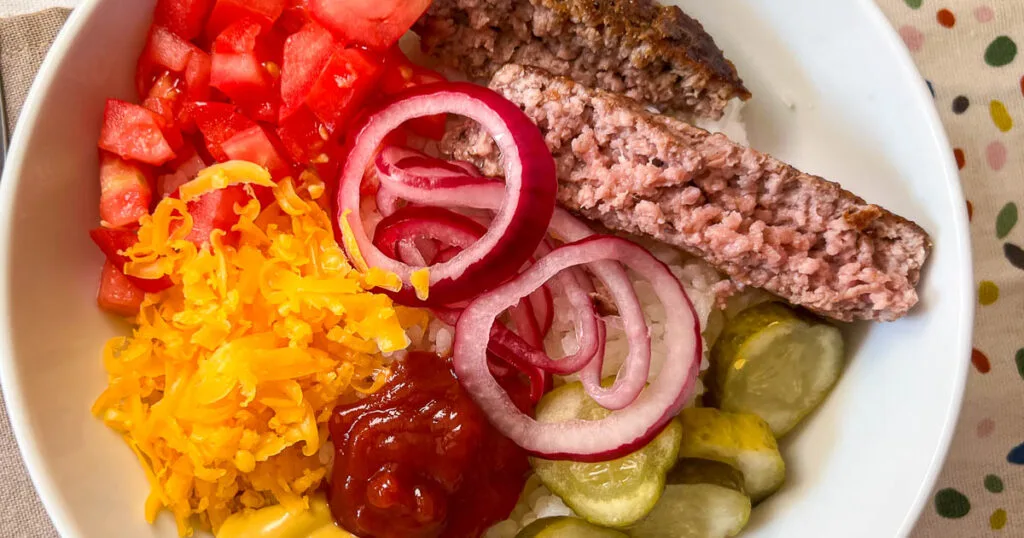Gazpacho screams summer in every refreshing spoonful. If you have tomatoes, a pepper, a cucumber, some stale bread and a blender, you can make this easy Gazpacho recipe at home when the temperature soars outside.

So you just arrived home from the farmer’s market with a pile of big beautiful tomatoes. Sure, you could make salad, salsa or even pasta sauce. However, nothing better utilizes and ‘brings home’ the flavors of the market and the summer season better than a cooling bowl of Gazpacho.
Gazpacho is super easy to make if you have a blender and a few veggies. After you make the cold summer soup the first time, you’ll want to make it all summer long. And the best part? You don’t need to chop your veggies in any special shapes or sizes. The blender does most of the work.
What Is Gazpacho?
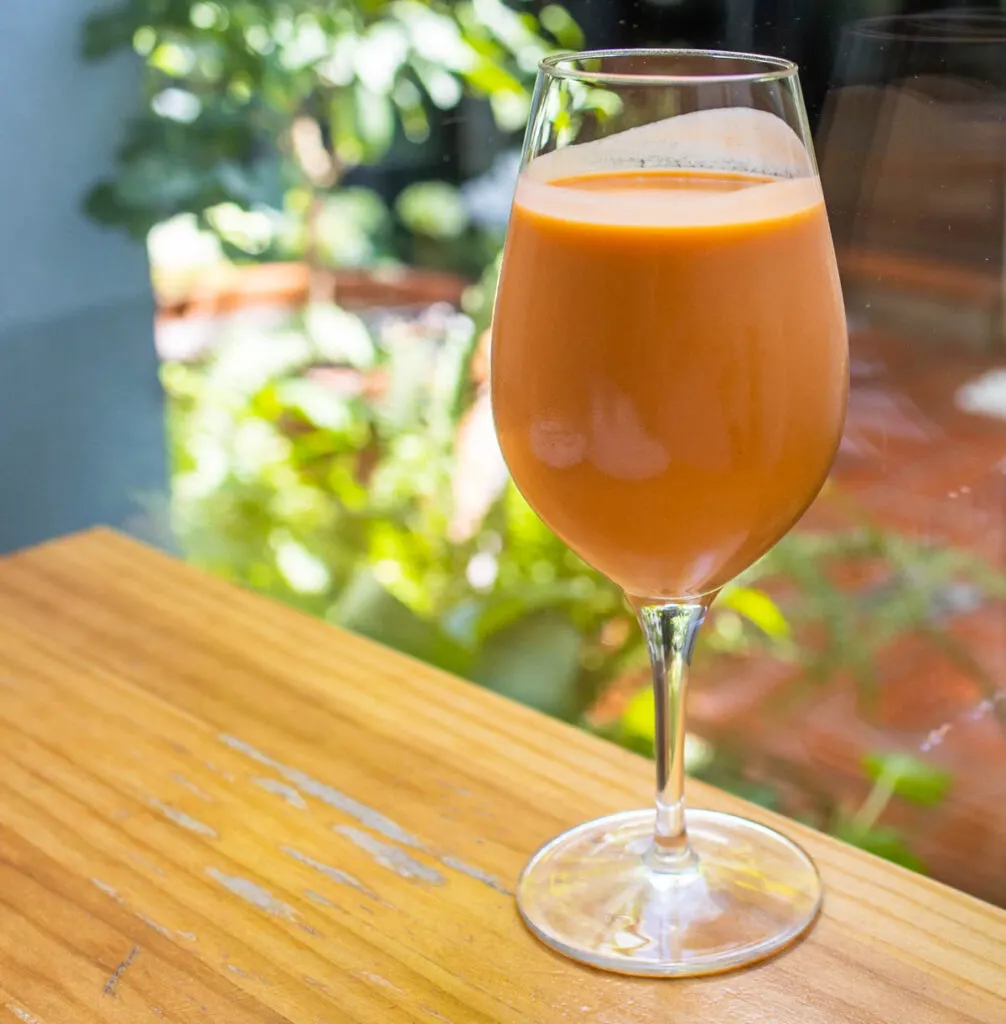
Today’s popular version of Gazpacho is a cold soup made with fresh tomatoes, various vegetables, bread, vinegar and olive oil. But there’s not just one type of Gazpacho. Most versions use tomatoes but others, like Ajo Blanco, feature almonds or garlic. Some ancient versions of Spanish Gazpacho even contained “rabbit, partridge or quail.“ Don’t even get us started on watermelon Gazpacho.
To us, Gazpacho is a cold tomato soup born in the garden.

Some like their Gazpacho rustic with whole chunks of crunchy vegetables. We prefer the luxurious, silky mouthfeel that results when the vegetables are puréed and then chilled. And, although the Spanish enjoy drinking Gazpacho out of a glass, we prefer eating our chilled soup with a spoon.
History of Gazpacho
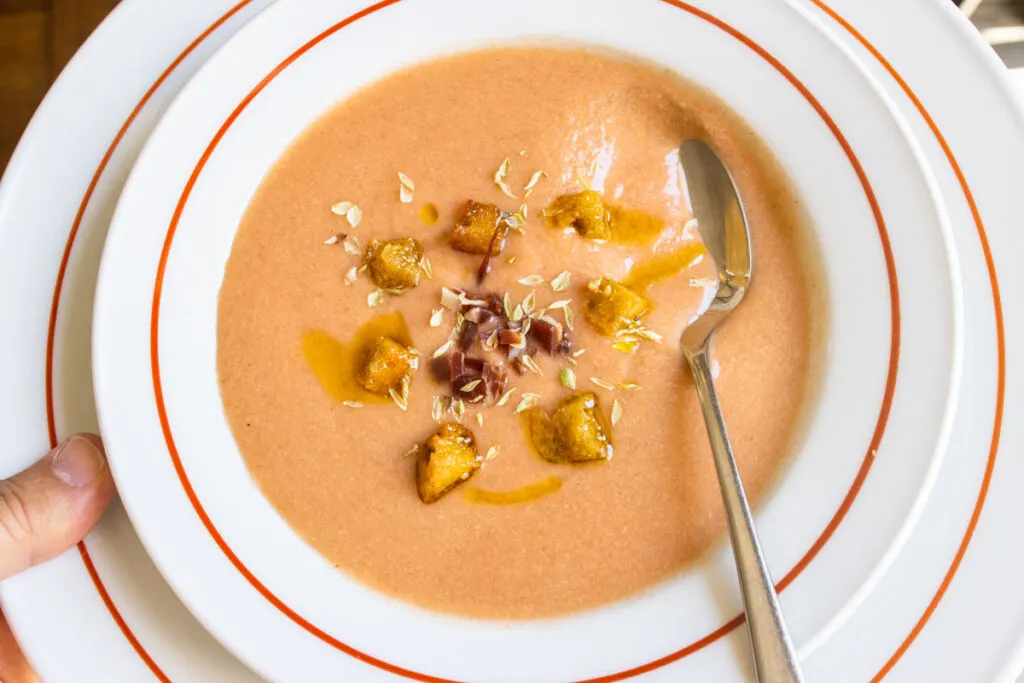
The concept of bread-based soup has been around for quite a while. Some believe the dish, which was made famous in the south of Spain, arrived with the Moors though the roots of the dish may have been Roman. This isn’t a stretch since the idea of a soup with soaked bread definitively has roots in the Italian peninsula.
The addition of tomato happened after the Columbian expansion, as was the case with many European culinary concepts. That’s when the bread soup began its evolution toward the Gazpacho we know and love today. The 1922 introduction of the blender furthered that evolution by leaps and bounds.
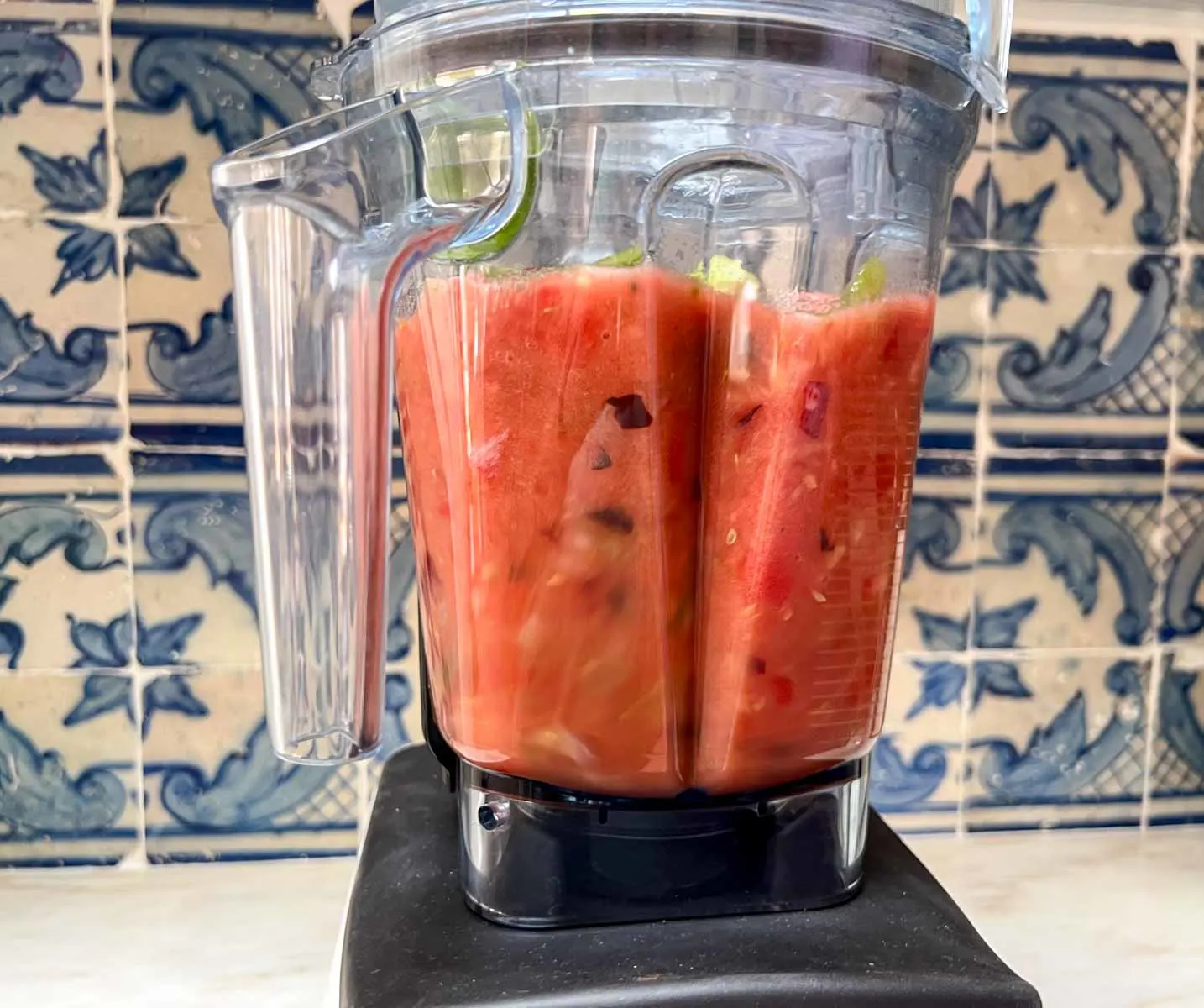
It’s important to know that some cooks in Spain don’t use blenders and pound traditional Gazpacho the old fashioned way to keep the raw, fresh flavors of their veggies. You can do that too if you have strong muscles and a resilient constitution.
As for us, we love the way a blender turns a bunch of veggies, bread and liquid into a deep pink summer soup. It’s nothing short of culinary magic.
Ingredients
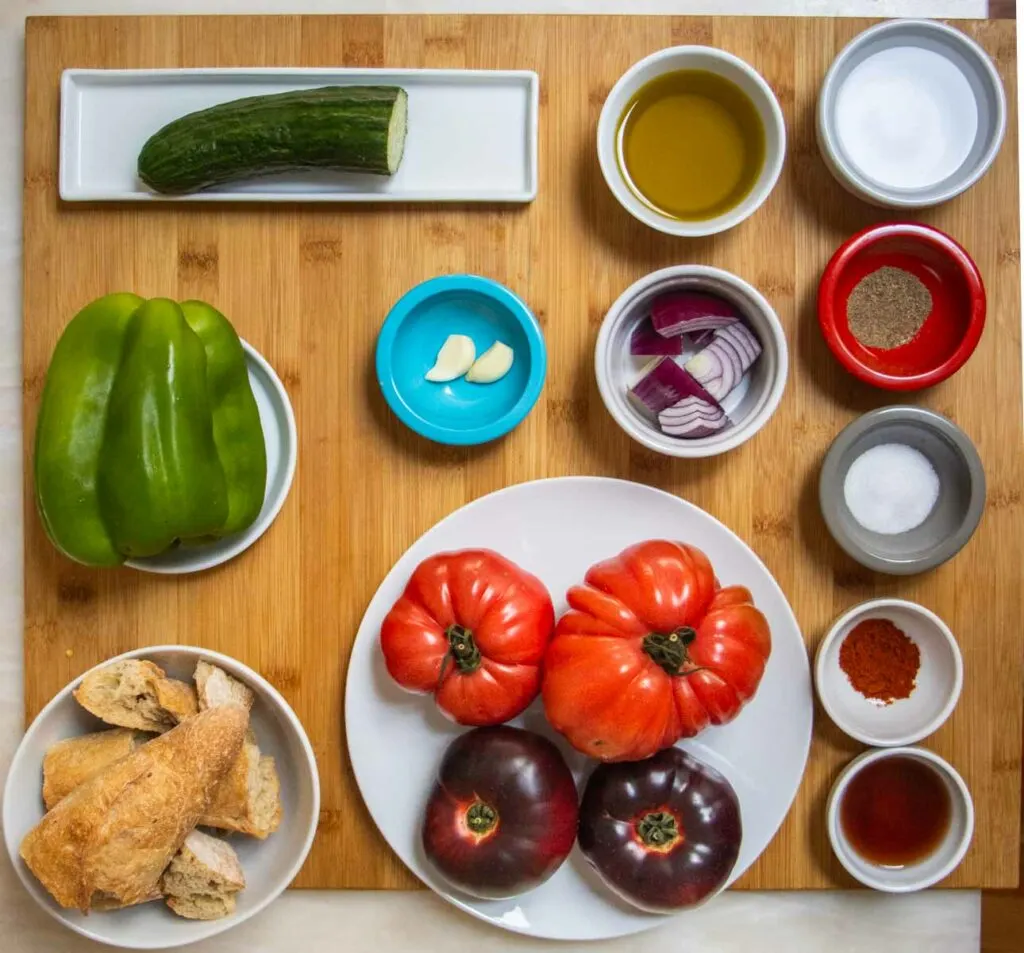
Our version of Gazpacho, like most versions of the cold soup, consists mostly of tomatoes. Tomatoes provide Gazpacho with the soup’s base flavor, sweetness and umami. Other vegetables like cucumber and green pepper provide dimension.
And, while tomatoes provide some acid, the additions of vinegar, onion and garlic balance out the soup’s flavors. This is especially the case if you use the kind of sweet tomatoes that grow in the heat of the summer.
Here’s all you need to make great Gazpacho:
Tomatoes
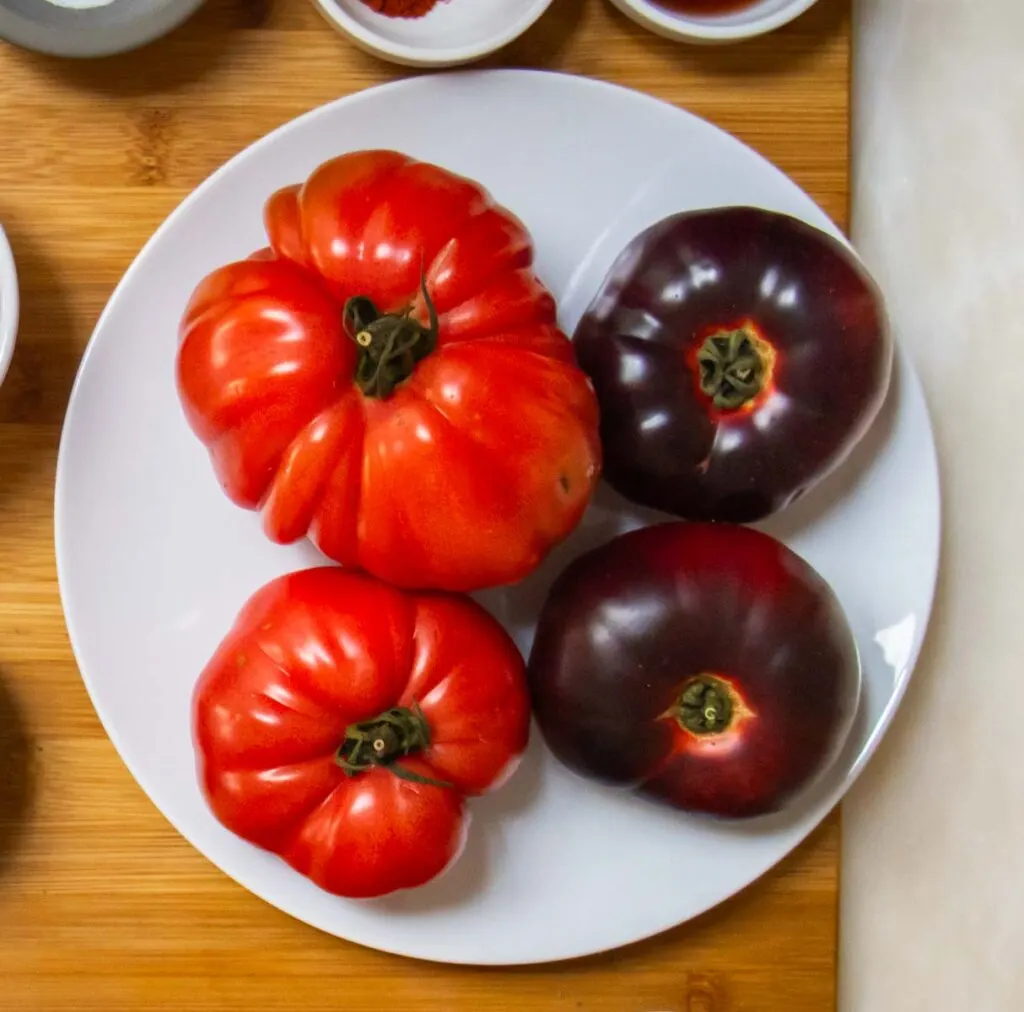
Our Gazpacho starts with tomatoes. Assuming that you’re serving this soup in the summer, the key is to buy the best available tomatoes.
Some authentic Gazpacho recipes encourage the use of plum or roma tomatoes. These tomatoes have less seeds and a classic, sweet tomato flavor. However, we say use any tomato that tickles your fancy. You can use purple tomatoes, green stripe tomatoes or cherry sun gold tomatoes. Part of the fun of making Gazpacho is seeing how different tomatoes impact the soup’s flavor.
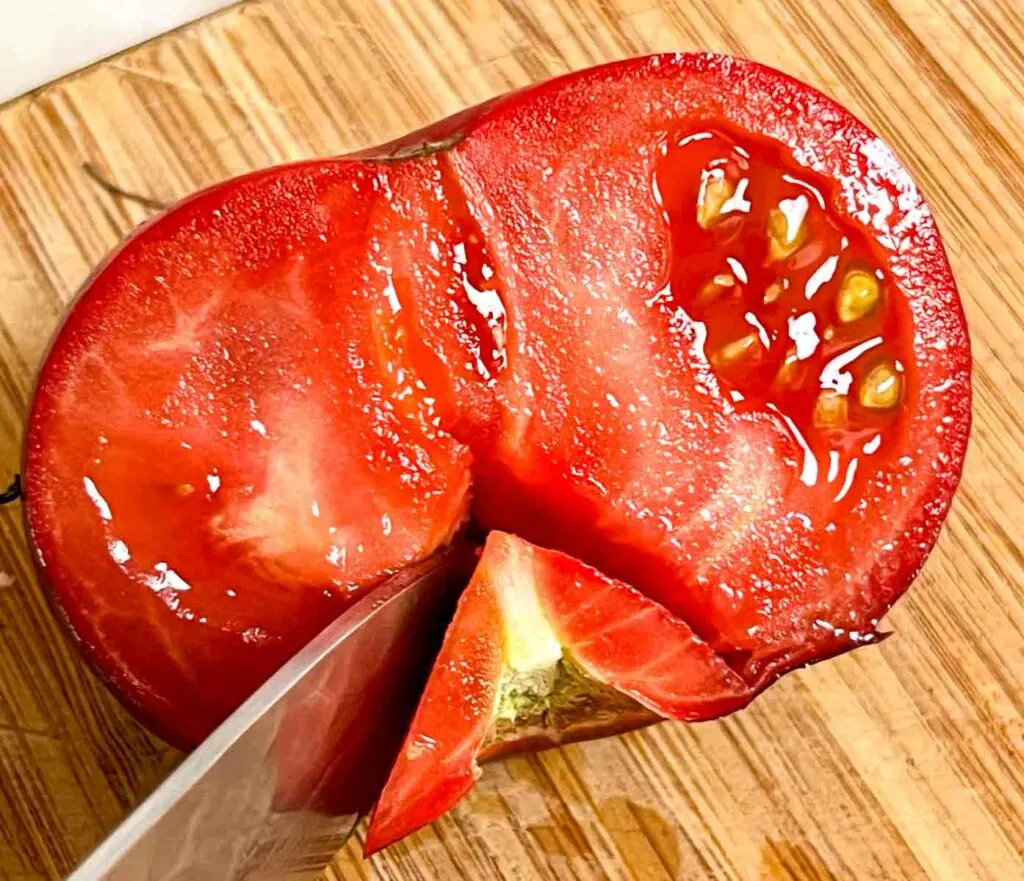

We most recently used a combination of black beauty and oxheart tomatoes since that’s what was available at our local market. The resulting Gazpacho was excellent with big tomato flavor.
Pro Tip
You need to remove the stems and woody core from your tomatoes but that’s it. The seeds and gel of the tomato bring wonderful flavor to this Gazpacho recipe.
Green Bell Pepper
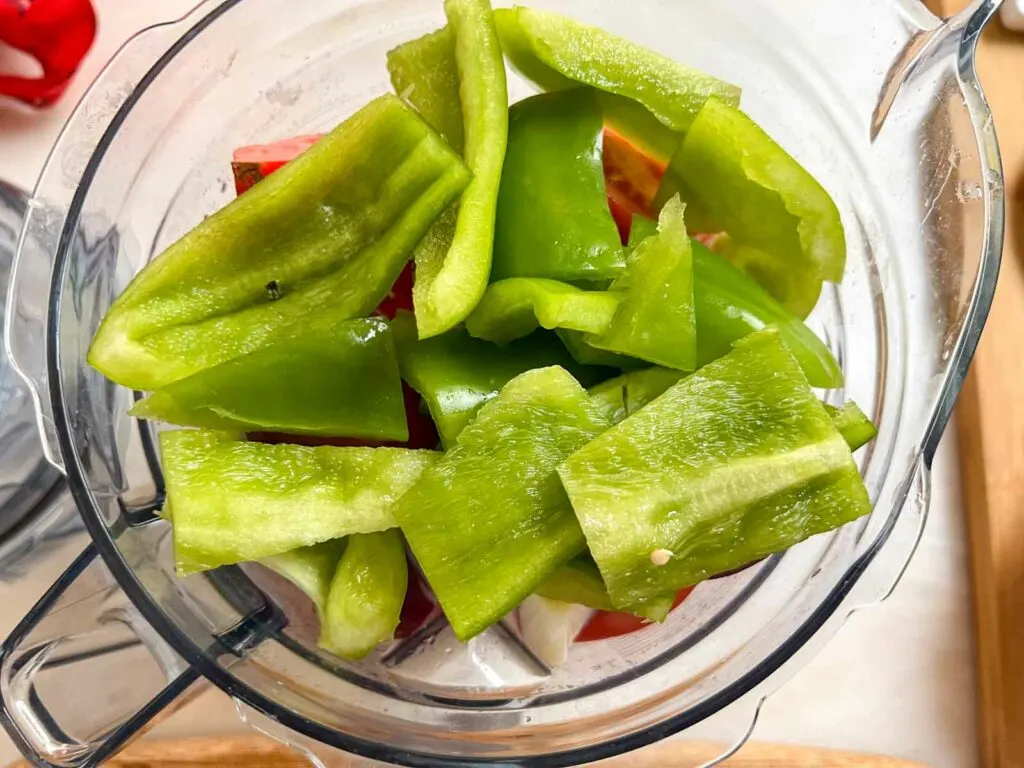
Nothing carries the flavors of the summer garden like green bell pepper.
We cut the green pepper into large chunks. We also remove the pepper’s seeds, core and white pithy parts before we add it to the blender.
Cucumber
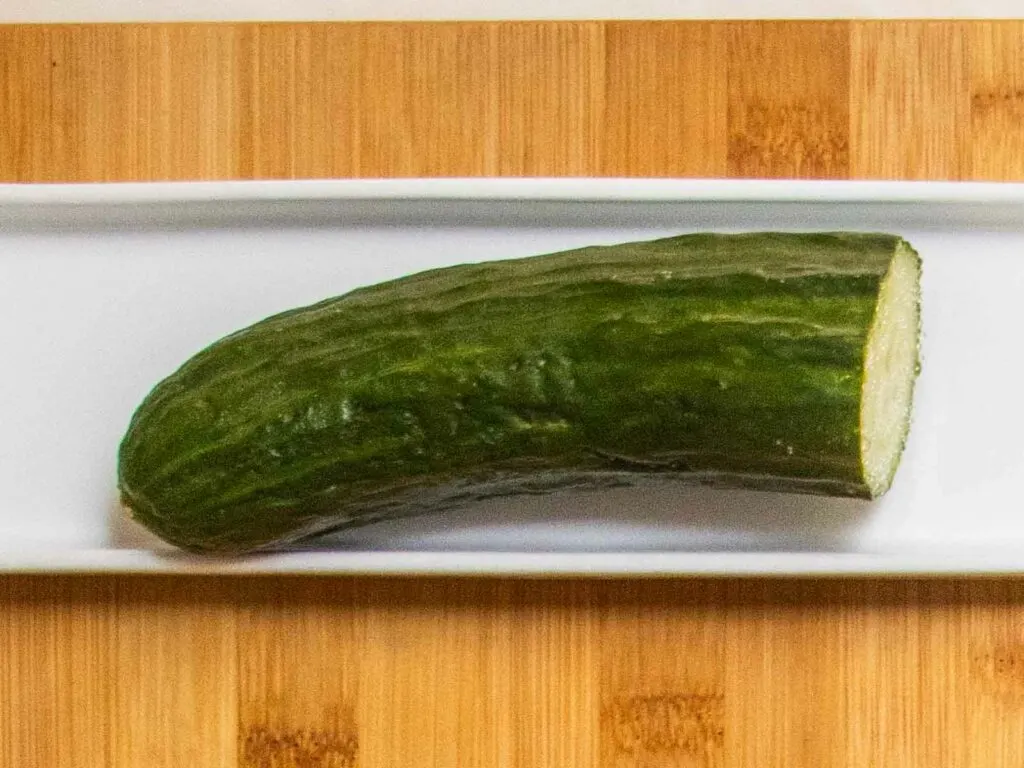
We like to use English cucumbers in this Gazpacho recipe since they’re low on seeds. If you do the same, you won’t need to scrape out seeds before adding the cucumber to the blender.
Stale Bread
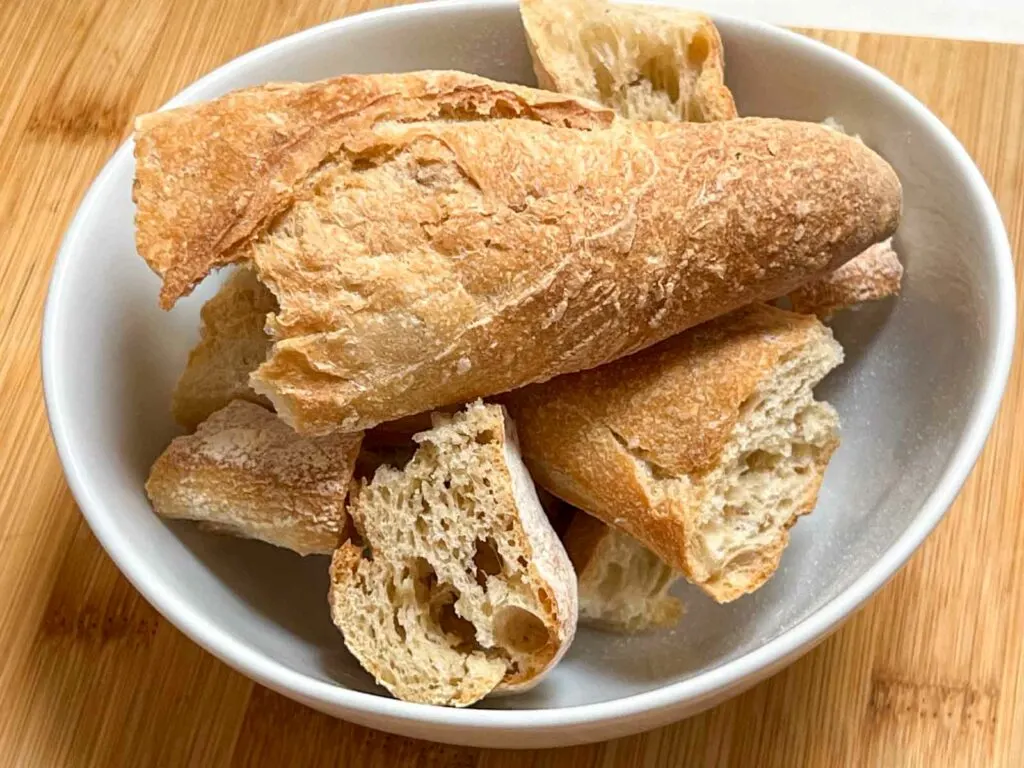
This Gazpacho recipe only requires a few ounces of stale bread. Since we’re in Europe, we often have a stale baguette handy. They get stale fast, typically in just a day or two.
You can probably buy a baguette from your local bakery. If you instead use bread from a loaf or boule, cut thick slices of the bread and leave them out so that they can get stale.
Onion and Garlic
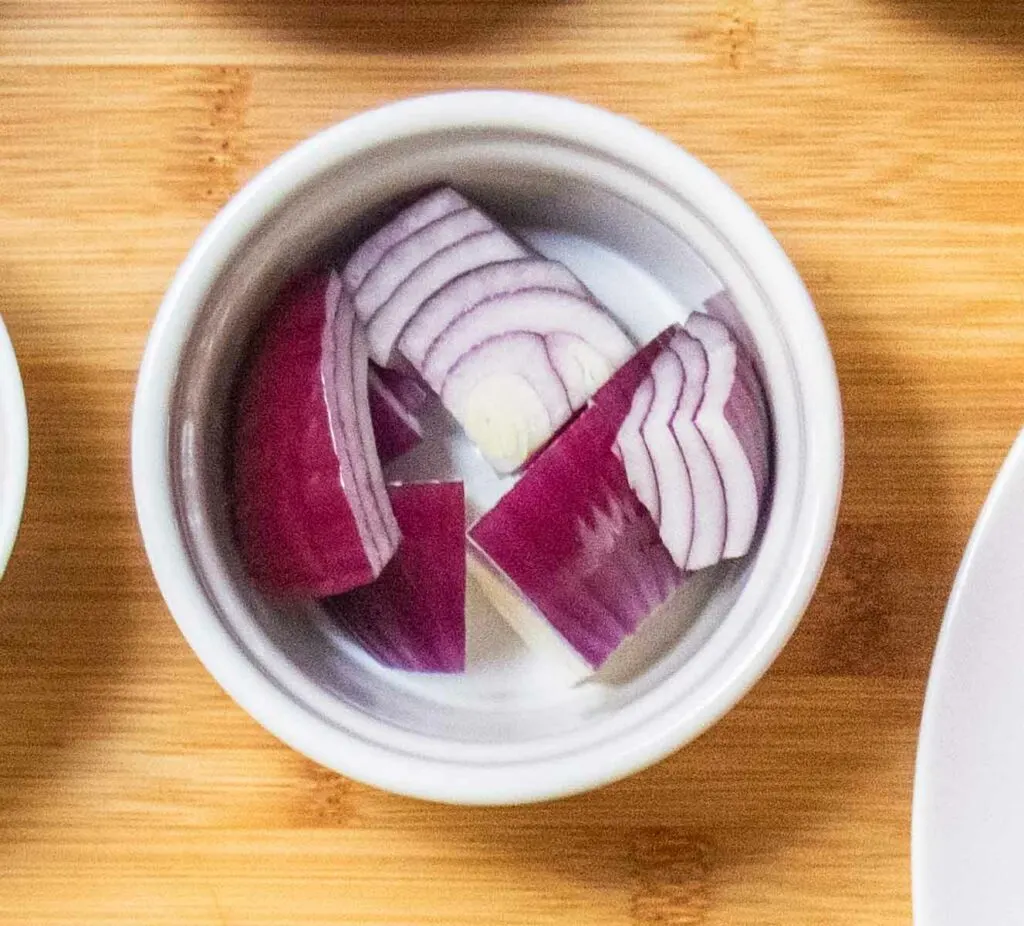
Onion and garlic contribute their unique alium flavors to Gazpacho. We coarsely chop the onion and just one large clove (or two small cloves) of peeled garlic for this recipe.
Spanish Smoked Paprika
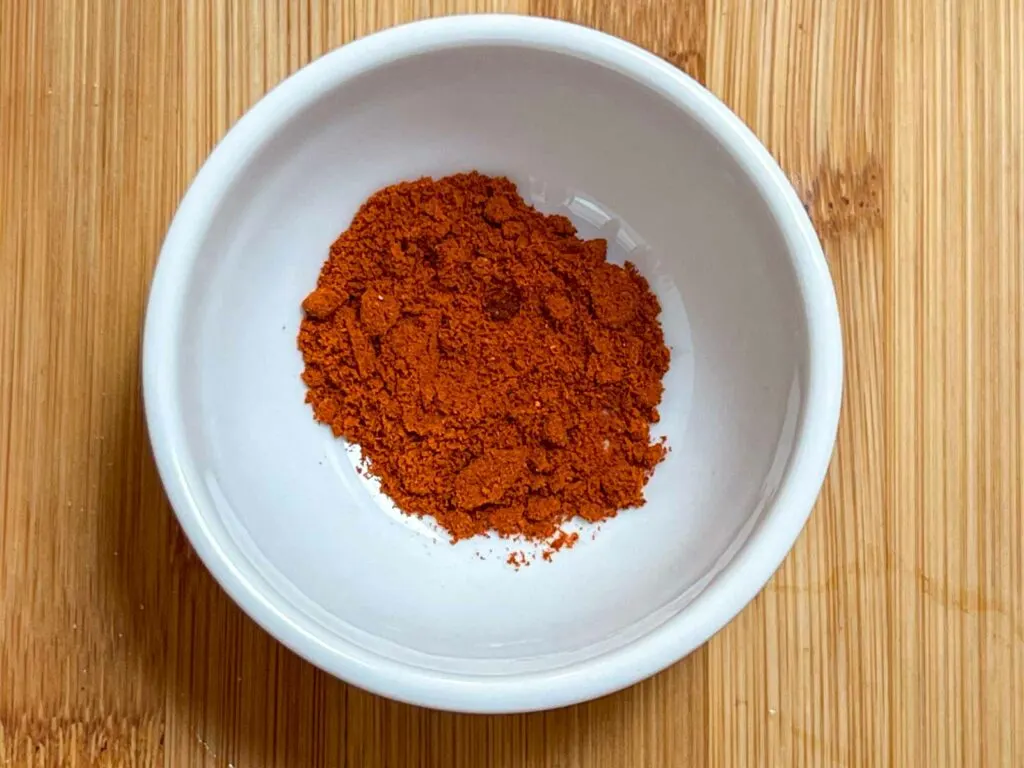
Some people add cumin to their Gazpacho recipes. But, to us, nothing screams Spain like pimentón (i.e. smoked paprika). We use a small amount in this recipe which provides just a hint of smokiness to the finished Gazpacho. You can add more or less smoked paprika or a little of any other spice (like ground cumin) that you prefer.
Sherry, Red Wine or White Wine Vinegar
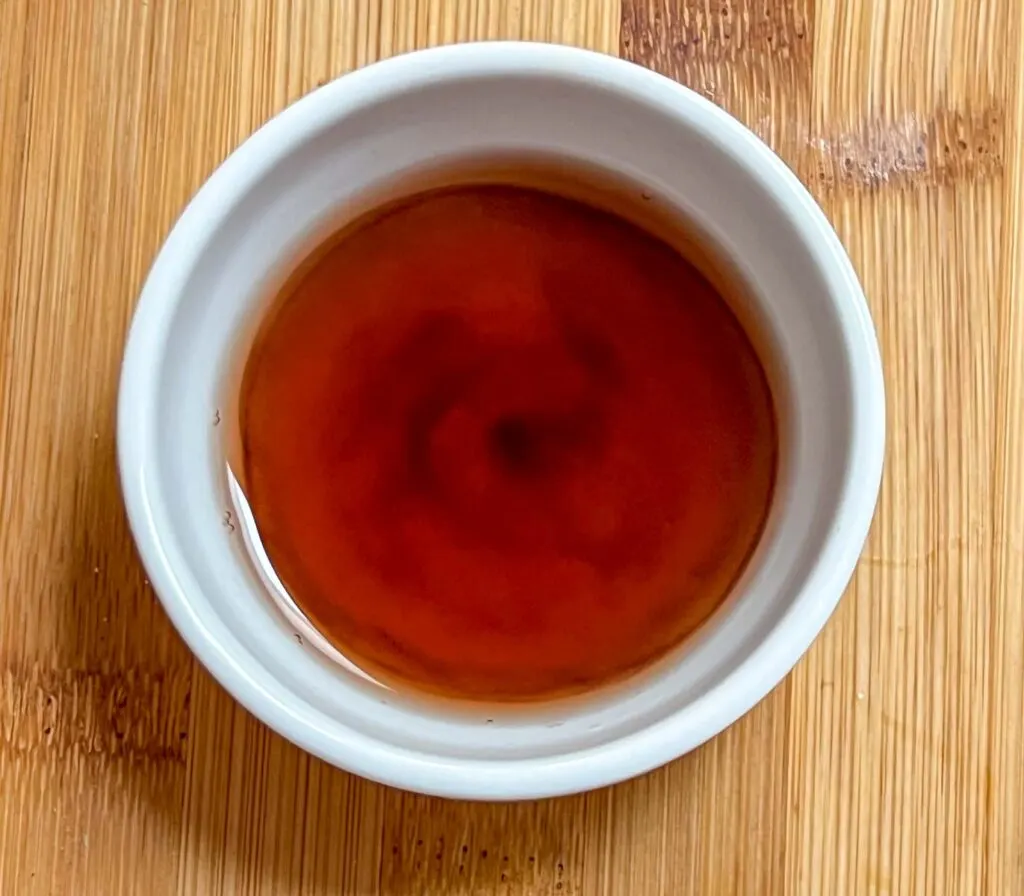
Since sweet tomatoes alone don’t provide enough acidity, adding vinegar is a must. Using sherry vinegar would be the most Spanish move but red wine and white wine vinegar work well too.
Pro Tip
While you could probably use cider vinegar instead, you’ll want to stay away from dark vinegars like balsamic.
Olive Oil
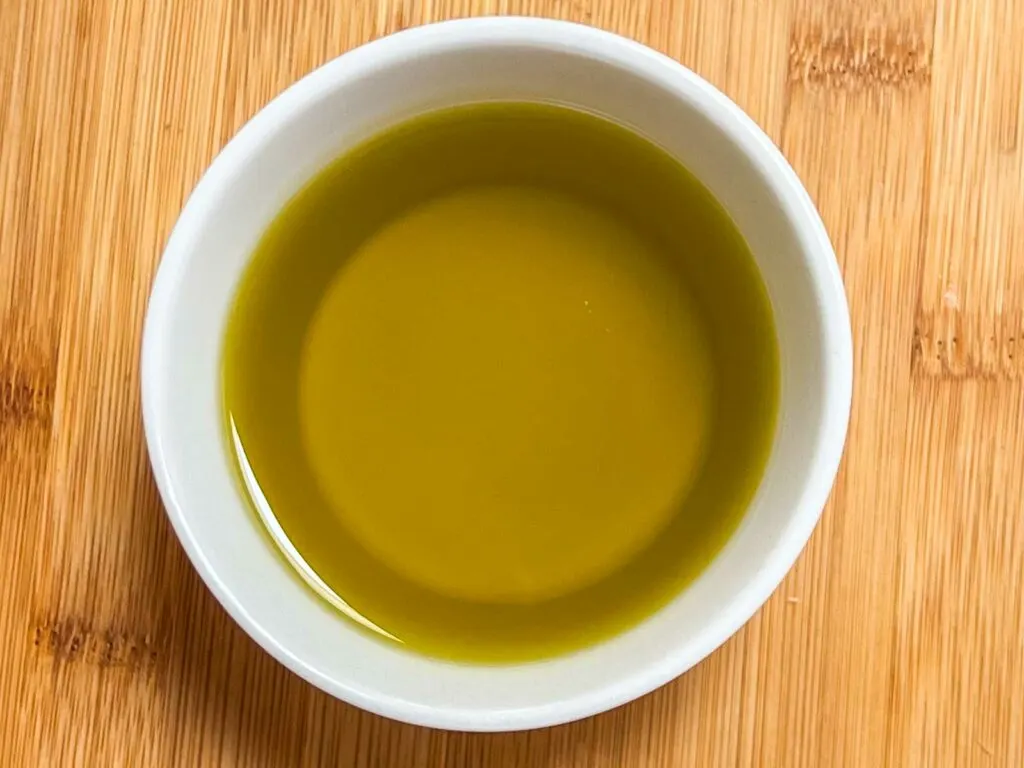
Olive oil provides Gazpacho with a little lubrication and viscosity.
We use the best available olive oil but a good quality extra virgin olive oil should be sufficient for this recipe. We also like to drizzle a little olive oil on the Gazpacho before serving the soup.
Water
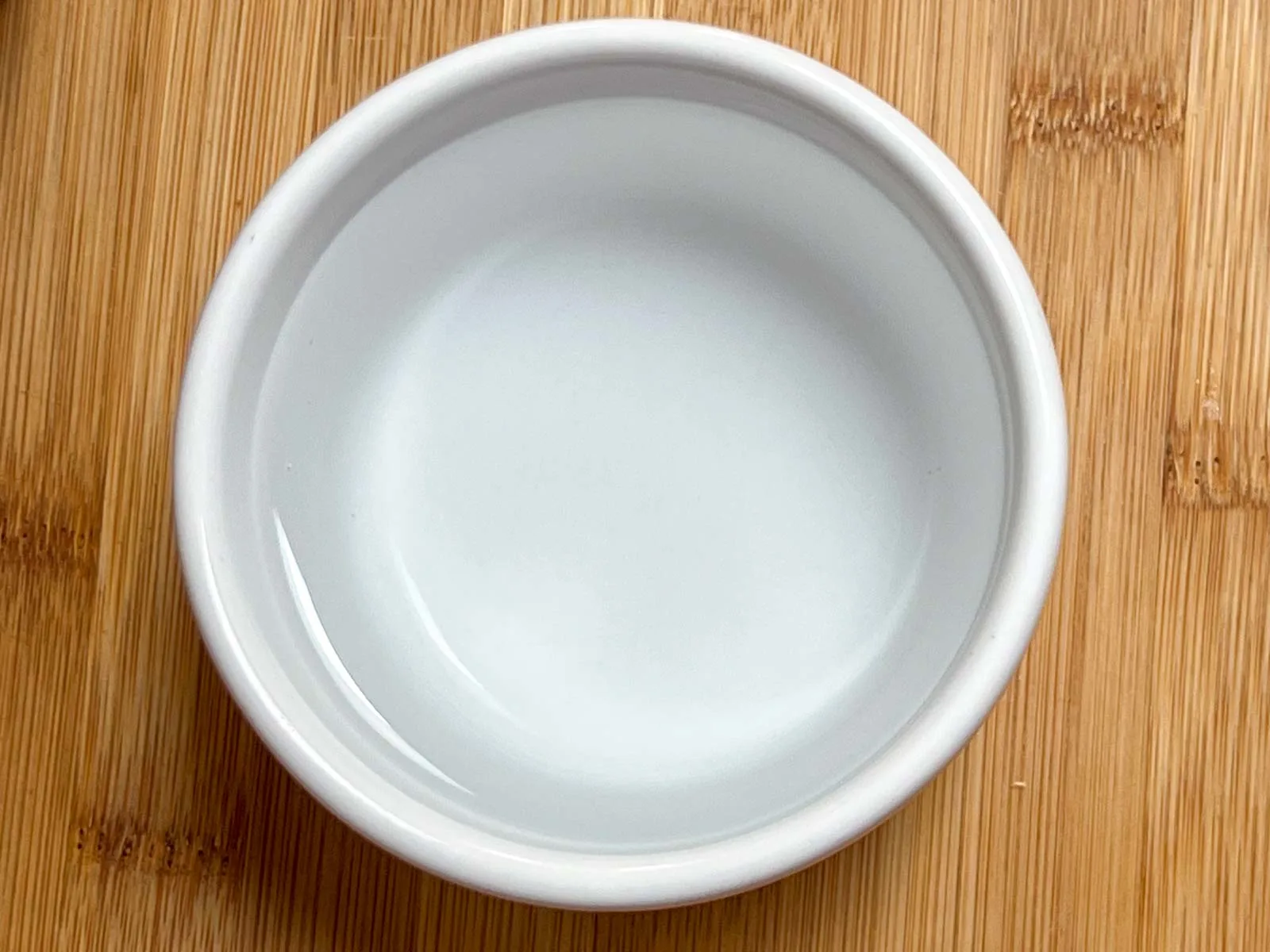
A little water (about a cup) loosens this Gazpacho without making it too thick. We either add water while blending the soup or just a little bit after we strain the mixture.
Pro Tip
Be careful not to add too much water since you can’t cook it out if the soup is too thin.
Salt and Pepper
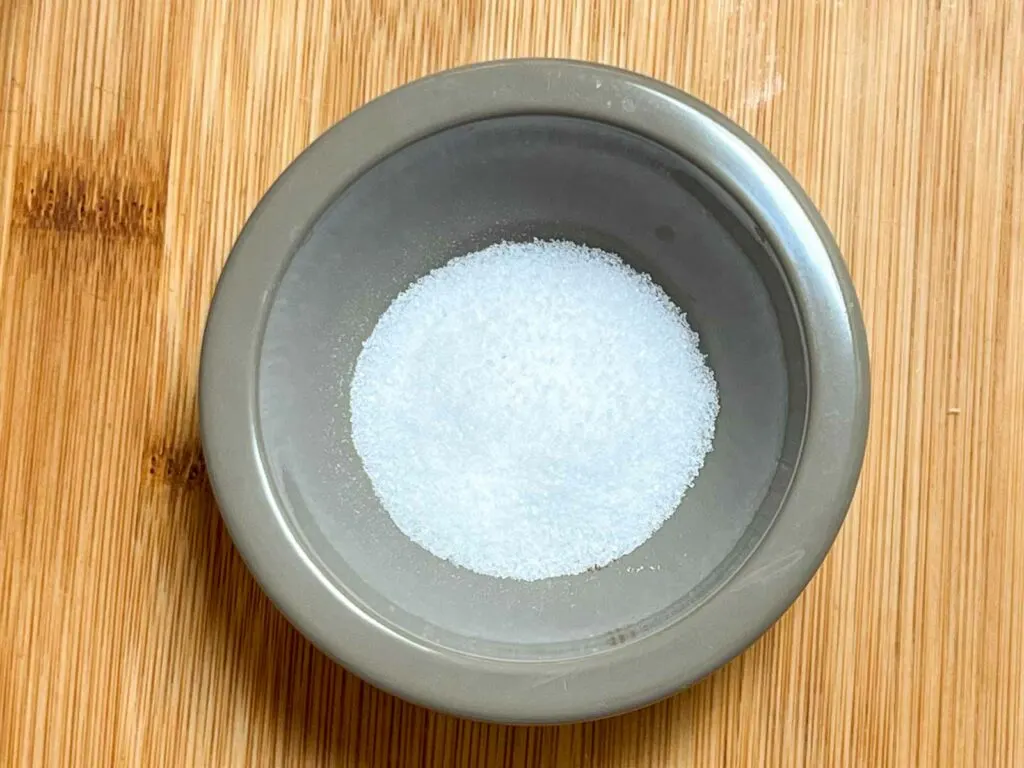
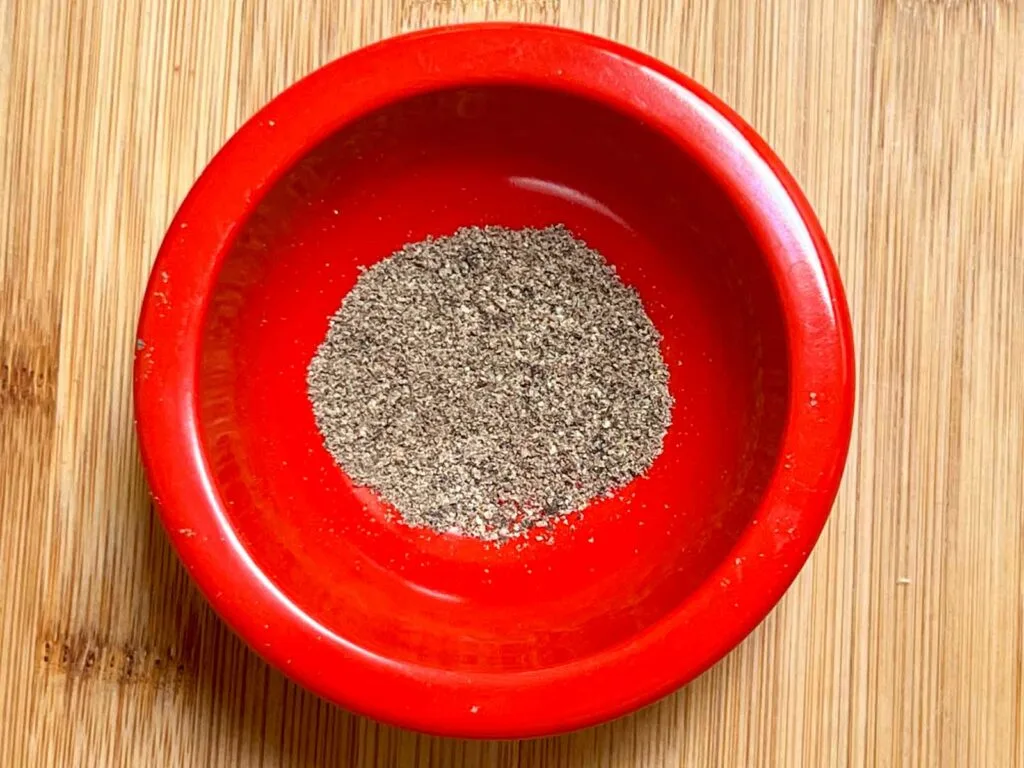
Salt and pepper are standard seasonings and enliven this Gazpacho recipe.
Fresh Herbs And Other Fun Additions/Garnishes

Adding fresh leafy herbs add life to Gazpacho. We often garnish our Gazpacho with mint but also see the merits of basil, tarragon, parsley, chervil and even cilantro. Sometimes we add a few crumbs of feta for extra flavor and pizazz.
Pro Tip
Be creative and add your favorite cheese or other garnishes like crumbled bacon or croutons.
How to Make Gazpacho

The most challenging part of making creamy Gazpacho is patiently straining the mixture after blending the ingredients. It’s not difficult but it takes time.
Straining Gazpacho is actually a rewarding activity that requires patience. Still, this may be one of the easiest recipes you can make at home. It’s also one of the best recipes when you source the fresh, seasonal produce at a farmer’s market or local supermarket.
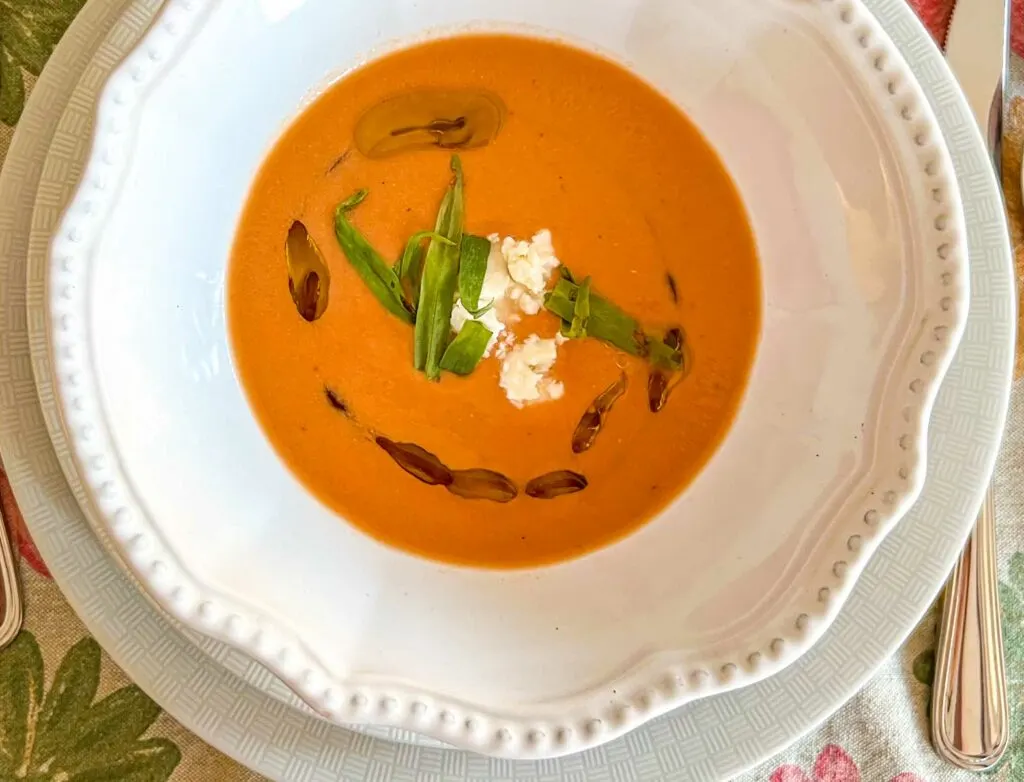
Gazpacho is great to serve at dinner parties. You can make the soup the day before the party and serve it directly from the refrigerator. It feeds four as an appetizer with enough left for two generous leftover servings.
When you’re ready to follow this easy Gazpacho recipe, the first step is to place all the sliced and prepped veggies along with the vinegar into the blender. Start the blender on a slow speed.
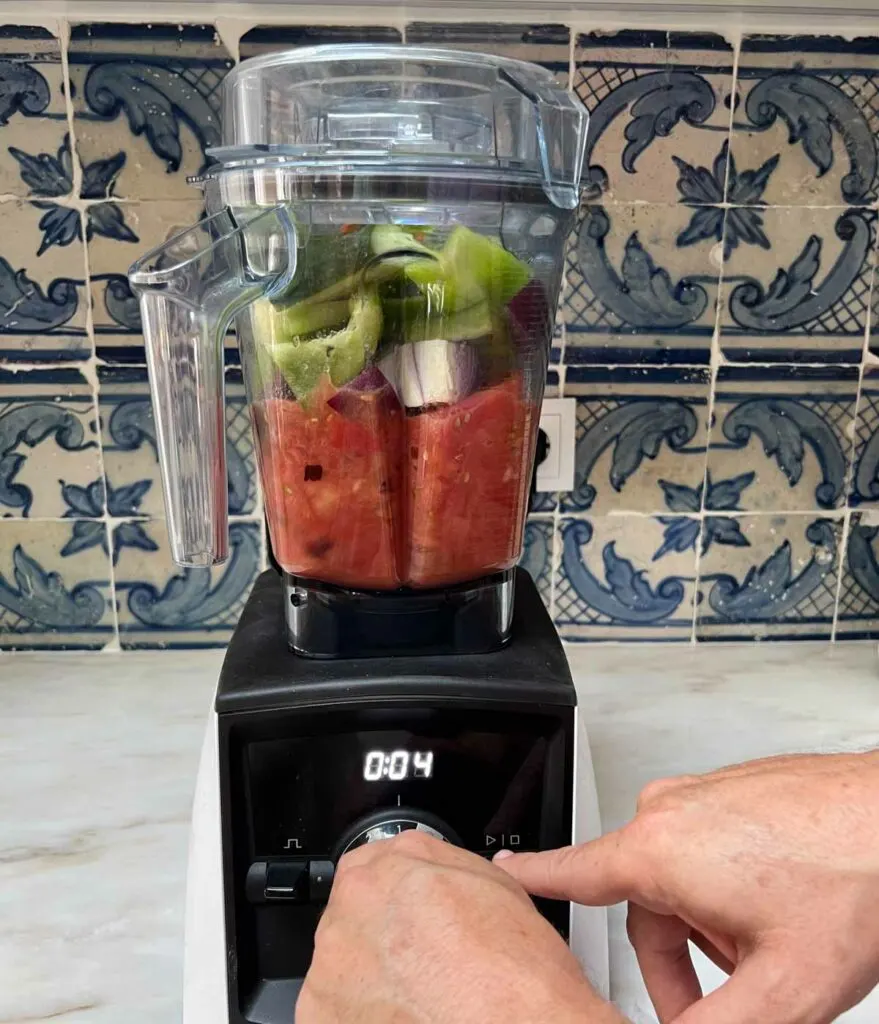
Once the vegetables have been sufficiently pulverized, add the stale bread pieces and blend on low to medium.

Turn the blender speed to high and gradually pour in the olive oil until fully incorporated. Once the olive oil is incorporated, add the water gradually until the mixture has reached the desired thickness.
The goal is a mixture that’s slightly thick without being pasty.
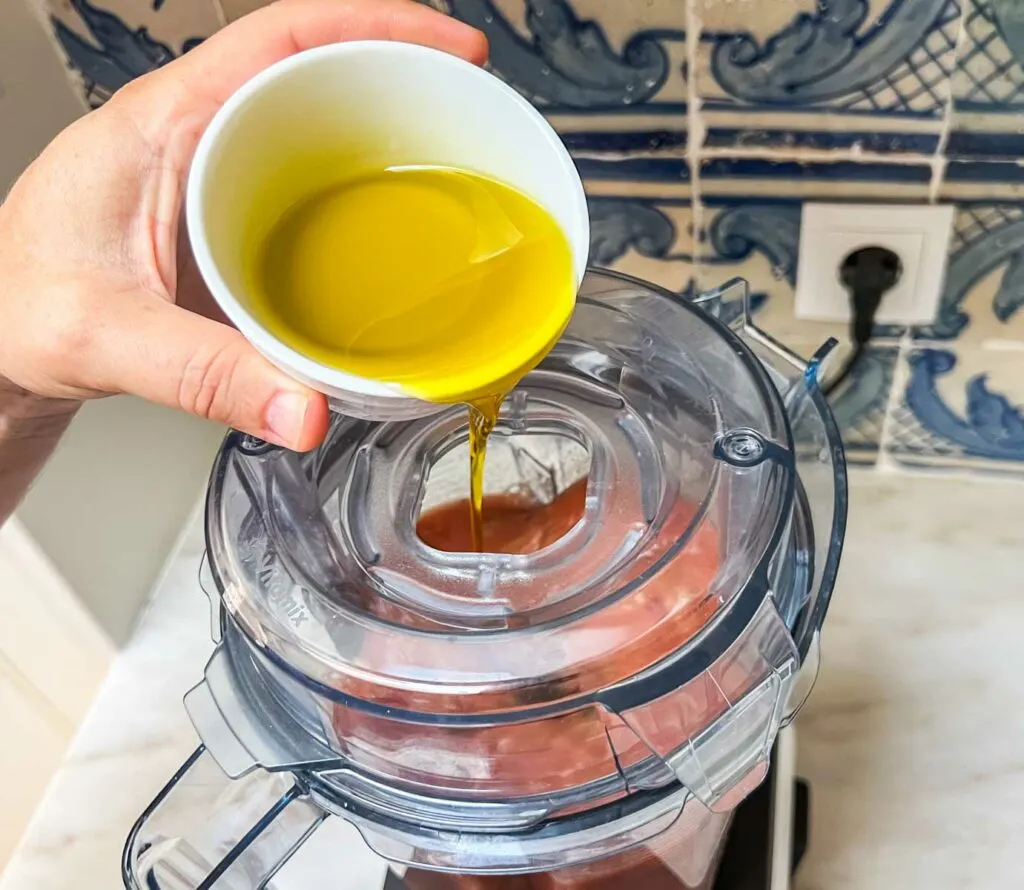
Once the Gazpacho is blended, pour and strain the soup through a fine mesh strainer using a rubber spatula to push the mixture through the strainer. This step will take a while – about 20 minutes.
Pro Tip
You don’t need to strain every bit through the mesh. You can stop once the only elements left in the strainer are the remains of the pulpy skin and seeds.
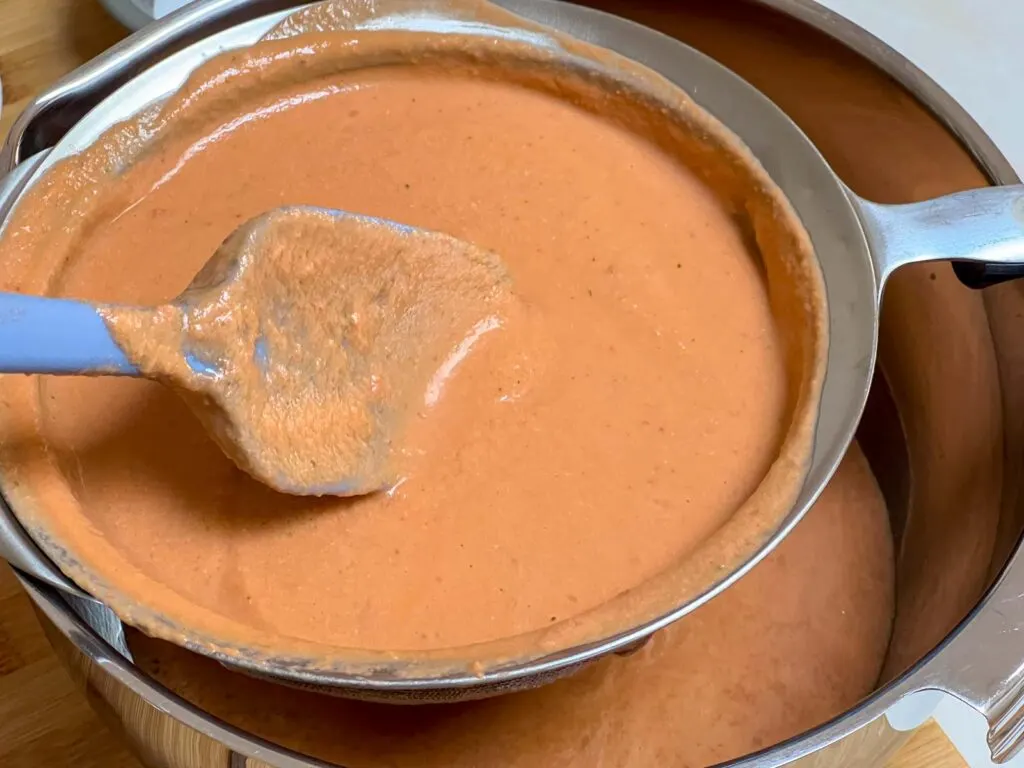
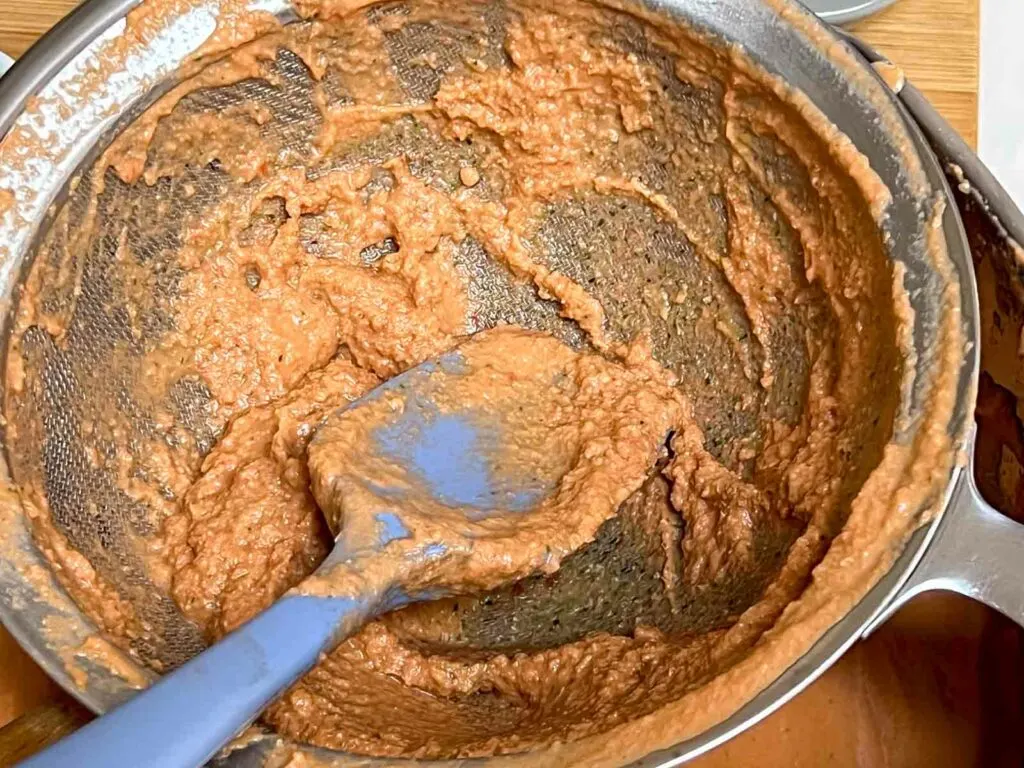
Mix the Gazpacho and add salt and pepper to taste.
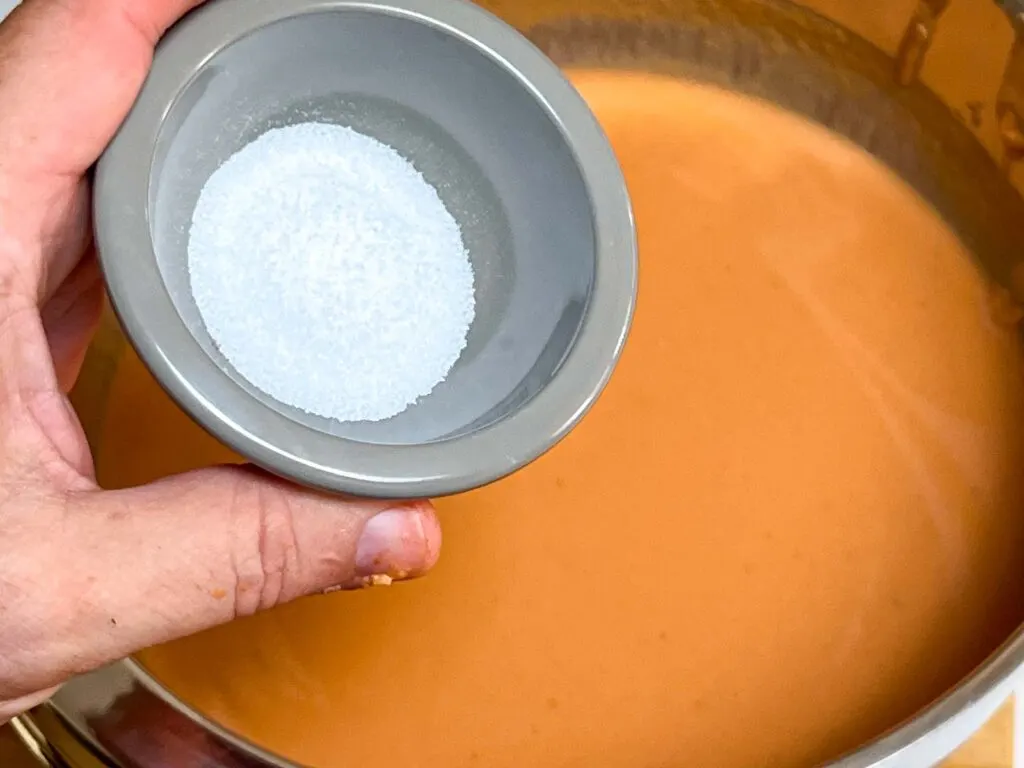
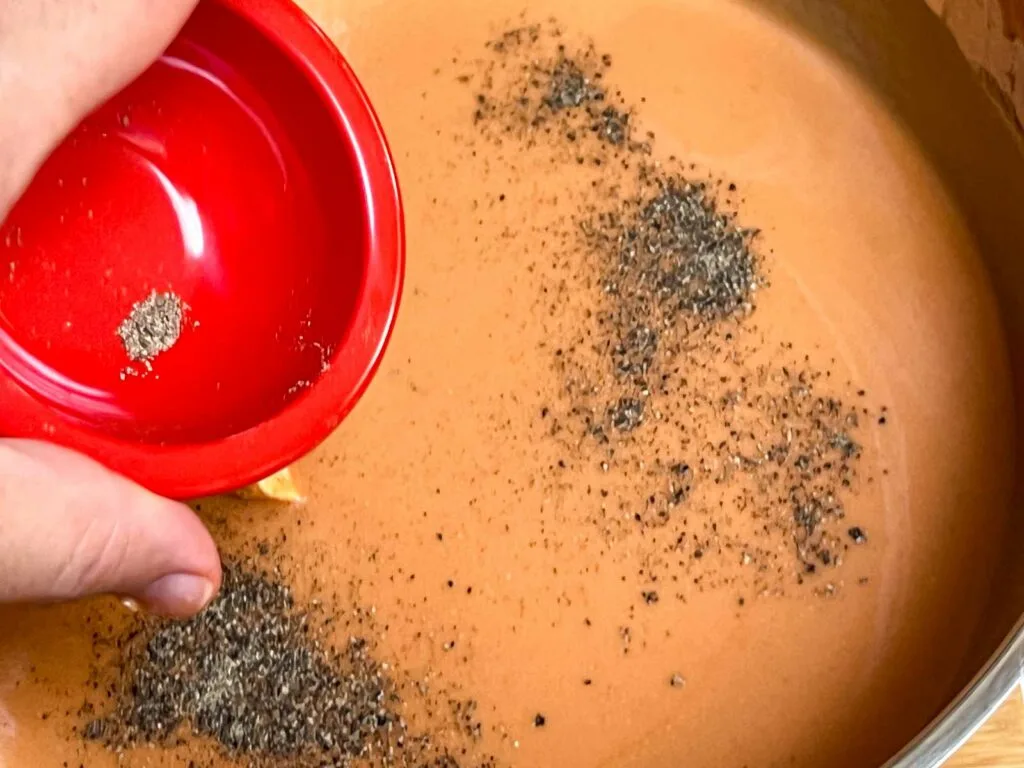
Refrigerate the Gazpacho for at least four hours or, ideally, overnight.
Before serving, garnish the soup with your choice of leafy green herbs. Feel free to add additional garnishes like breadcrumbs or feta.

The final step is to drizzle the Gazpacho with a little olive oil and serve. We like to serve it in flat white bowls but you can serve it in glasses instead.
Frequently Asked Questions
Gazpacho is a cold vegetable and bread-based soup.
Gazpacho is believed to have originated in Southern Spain in the 16th century. The soup’s recipe is believed to have been influenced by both the Moors and the Romans.
The essential ingredients of Gazpacho are tomatoes, bell peppers, cucumber, stale bread, olive oil and vinegar.
You don’t need to peel tomatoes when making Gazpacho. You also don’t need to remove the seeds or pulp. Just remove the stems.
Gazpacho is a cold soup.
Yes. You can add leafy herbs like basil, parsley or tarragon. You can also add croutons and cheeses like feta.
Yes. You can store Gazpacho for up to three days in the refrigerator.
Yes. You can freeze Gazpacho but you’ll need to blend it again after it’s defrosted.
Yes. Gazpacho is made with all natural ingredients and is relatively low in saturated fat.
Did you make this recipe? If so, please rate it below.
Gazpacho Recipe
Ingredients
- 3 pounds tomatoes (coarsely chopped with the stem and core removed)
- 1 medium sized green bell pepper (coarsely chopped with the seeds, stem and white pithy parts removed)
- ½ medium English cucumber (coarsely chopped)
- 1 medium onion (peeled with the core removed and coarsely chopped)
- 1 large garlic clove OR two small garlic cloves
- 4 to 6 ounces stale bread (cut into small pieces)
- ¼ cup olive oil ( plus additional for serving)
- 1 tablespoon smoked Spanish paprika
- ¼ cup water
- salt ( to taste)
- pepper ( to taste)
- leafy green herbs for garnish
Equipment
Instructions
- Place the chopped vegetables in a blender and begin pulverizing them on a slow speed until they've broken down to a managable pulp.
- Add the bread and continue blending on low to medium.
- Blend on high speed and slowly drizzle in the olive oil.
- Once the olive oil is added, slowly add the water until a desired consistency is reached
- Strain the mixture through a fine mesh strainer until all that's left is pulp.
- Add salt and pepper to taste.
- Place in the refrigerator for about four hours until chilled. You can keep the finished Gazpacho in the refrigerator for up to three days in a container that's both covered and sealed.
- Garnish with fresh leafy herbs prior to serving and drizzle a light amount of olive oil over the bowl.
Pro Tips
- Do not remove the tomato seeds.
- Gazpacho can be made up to three days ahead. You can add a tablespoon of water to loosen the texture if the soup gets too thick.
- Be careful and add water gradually. You can't cook the water out if the mixture becomes too thin.
- Feel free to add additional garnishes like feta or croutons.
Estimated Nutrition

About the Authors
Daryl and Mindi Hirsch
Saveur Magazine’s BEST TRAVEL BLOG award winners Daryl and Mindi Hirsch share their culinary travel experiences and recipes on the 2foodtrippers website. Since launching the site in 2012, they’ve traveled to over 40 countries in their quest to bring readers a unique taste of the world.
Original Publication Date: July 13, 2023


